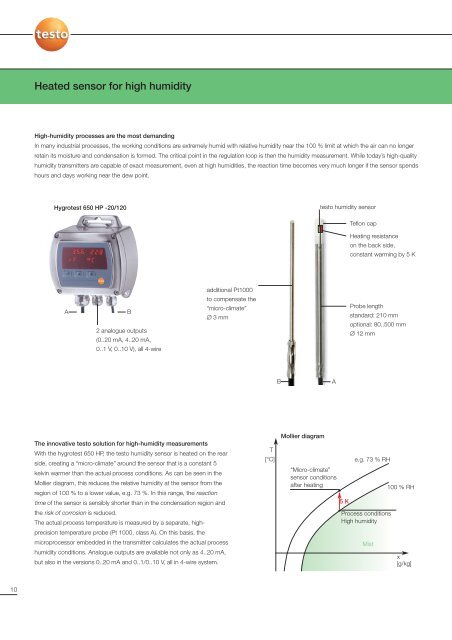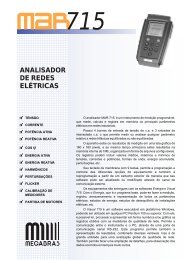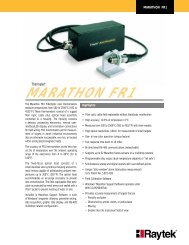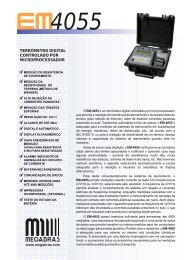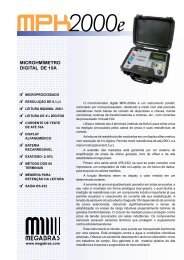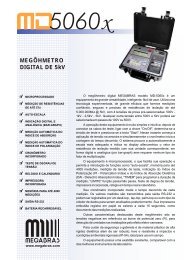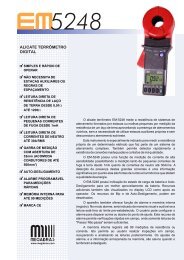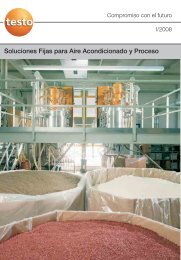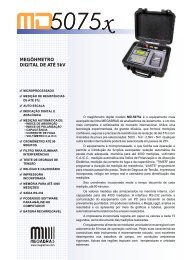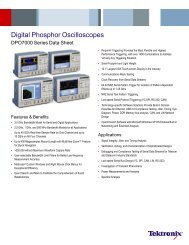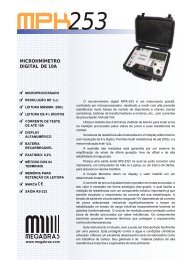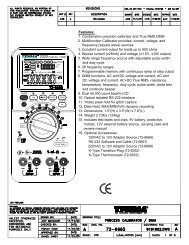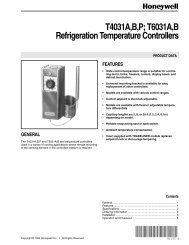hygrotest humidity transmitters
hygrotest humidity transmitters
hygrotest humidity transmitters
You also want an ePaper? Increase the reach of your titles
YUMPU automatically turns print PDFs into web optimized ePapers that Google loves.
Heated sensor for high <strong>humidity</strong><br />
High-<strong>humidity</strong> processes are the most demanding<br />
In many industrial processes, the working conditions are extremely humid with relative <strong>humidity</strong> near the 100 % limit at which the air can no longer<br />
retain its moisture and condensation is formed. The critical point in the regulation loop is then the <strong>humidity</strong> measurement. While today’s high-quality<br />
<strong>humidity</strong> <strong>transmitters</strong> are capable of exact measurement, even at high humidities, the reaction time becomes very much longer if the sensor spends<br />
hours and days working near the dew point.<br />
Hygrotest 650 HP -20/120<br />
testo <strong>humidity</strong> sensor<br />
Teflon cap<br />
Heating resistance<br />
on the back side,<br />
constant warming by 5 K<br />
A<br />
B<br />
2 analogue outputs<br />
(0..20 mA, 4..20 mA,<br />
0..1 V, 0..10 V), all 4-wire<br />
additional Pt1000<br />
to compensate the<br />
“micro-climate”<br />
∅ 3 mm<br />
Probe length<br />
standard: 210 mm<br />
optional: 80..500 mm<br />
∅ 12 mm<br />
B<br />
A<br />
The innovative testo solution for high-<strong>humidity</strong> measurements<br />
With the <strong>hygrotest</strong> 650 HP, the testo <strong>humidity</strong> sensor is heated on the rear<br />
side, creating a “micro-climate” around the sensor that is a constant 5<br />
kelvin warmer than the actual process conditions. As can be seen in the<br />
Mollier diagram, this reduces the relative <strong>humidity</strong> at the sensor from the<br />
region of 100 % to a lower value, e.g. 73 %. In this range, the reaction<br />
time of the sensor is sensibly shorter than in the condensation region and<br />
the risk of corrosion is reduced.<br />
The actual process temperature is measured by a separate, highprecision<br />
temperature probe (Pt 1000, class A). On this basis, the<br />
microprocessor embedded in the transmitter calculates the actual process<br />
<strong>humidity</strong> conditions. Analogue outputs are available not only as 4..20 mA,<br />
but also in the versions 0..20 mA and 0..1/0..10 V, all in 4-wire system.<br />
T<br />
[°C]<br />
Mollier diagram<br />
“Micro-climate”<br />
sensor conditions<br />
after heating<br />
5 K<br />
e.g. 73 % RH<br />
Process conditions<br />
High <strong>humidity</strong><br />
Mist<br />
100 % RH<br />
x<br />
[g/kg]<br />
10


